#fairy tree
Photo

Source details and larger version.
From spooky trees to giant trees to that tree that fell in the forest that no one heard: vintage tree imagery.
71 notes
·
View notes
Photo

Legends and myths about trees
Celtic beliefs in trees (15)
H for Huath (Hawthorn) - May 13th - June 9th
“May tree - Sixth month of the Celtic tree calendar (Ref)”
colour: midnight blue; Gem: lapis lazuli; Gender: female; Patrons: Olwen, Blodeuedd, Chaldean, Humen, Selene, Virgin Mary; Symbols: love + marriage, fertility + birth, reproduction, heart
The short, thorny, graceful hawthorn. The slender hawthorn trunk and branches twist as the years go by. In winter they are particularly beautiful, standing clinging to misty wildernesses and craggy rocky outcrops, or clustered on open ranges of hills that their appearance is spectacular. Leaves and flowers appear simultaneously in May, signalling the change of season from spring to summer. Hawthorn flowers bloom in clusters, so that at the height of spring, rows of white froth run across the fields and mountains, a scene aptly captured by the English writer H. E. Bates as 'the fluffy cream floating in May'.
In spring, when the hawthorn flowers are in full bloom, the air releases a musky, sweet, rich fragrance all around. Small round berries turn burgundy in autumn.
In Ireland, hawthorn is still cherished as a magical tree protected by the fairy kingdom. Tradition has it that if you cut down a single hawthorn tree standing alone in a field or burial mound, you will lose your livestock and household possessions.
Hawthorn trees protect wells and springs as fairy trees. The beautiful flowers of hawthorn are also said to deliver prayers to the heavens. Even today, many people tie rags and other items to hawthorn trees standing near wells and springs, wishing for good luck or that their love will reach the person they love.
Before Christianity, hawthorn was the supreme fertility symbol and at the May Festival, people confided their love, danced to their heart's content and made love in the woods. Among the Celts, spring was the season for marriage, and it was customary to bring a bouquet of hawthorn flowers to weddings to ensure that the couple would be blessed with children.
In Britain, the earliest known hawthorn goddess was Olwen ('white footprints'), a woman of courage, wit and beauty. The well-known mythological tale of Culhwch and Olwen, in which King Arthur's cousin, Culhwch, overcame 40 impossible tasks that seemed virtually unattainable set out by Olwen's father, the giant king, Yspaddaden, and marry his beloved Olwen.
As the beautiful, white hawthorn flowers opened, people celebrated the power of nature and love to bring new life into the world and marvelled at the miracles of sexual activity, pregnancy and childbirth. For the Celts, sexual activity, pregnancy and childbirth were not something to be ashamed of, but an essential part of life and a sacred expression that one could love.
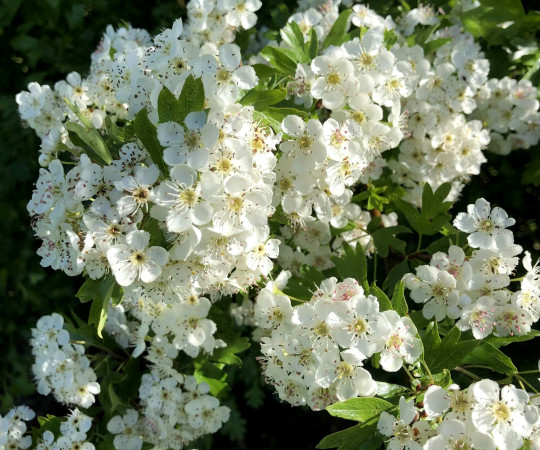
木にまつわる伝説・神話
ケルト人の樹木の信仰 (15)
HはHuath (サンザシ) - 5月13日 - 6月9日
『5月の木〜 ケルトの木の暦(参照)の第6月』
色: ミッドナイト・ブルー; 宝石: ラピスラズリ; 性: 女性; 守護神: オルェン、ブロダイウェズ、カルデア、ヒュメン、セレネ、聖母マリア; シンボル: 愛+結婚、豊穣+出産、生殖、心臓
背丈が低くとげをもった優雅なサンザシ。ほっそりとしたサンザシの幹や枝は、年が経つにつれてねじれていく。冬になるとその姿は特に美しく、霧の立ち込めた荒野や、ごつごつとした岩の露頭にしがみつくように立つ姿、また広々と連なる丘に群れをなしている様子は、見事というより他はない。葉と花は5月に同時に姿を現し、春から夏に季節が変わることを知らせている。サンザシの花は群れを成して咲くことから、春の盛り、白い泡立ちの列が野山を縦横に走り、その様子を英国人作家のH・E・ベイツは、「五月に浮かび上がるふわふわしたクリーム」と的確に表現している。
春、サンザシの花が満開になると、麝香 (じゃこう)のような甘く濃厚な香りがあたり一面に放たれる。小さな丸い実は、秋になるとワインレッドに変わる。
アイルランドでは今もなお、サンザシは妖精の国に守られた魔法の木として大切にされている。野原や埋葬塚に一本だけぽつんと立っているサンザシの木を切ると家畜を失うか家財を無くすという伝承もある。
サンザシは妖精の木として、井戸や泉を守っている。また、サンザシの美しい花は祈りを天まで届けてくれるという。現在でも井戸や泉のそばに立つサンザシには、幸運が訪れるますように、あるいは好きな人に思いが届きますようにと願う大勢の人々が、布きれや品物を結び付けている。
キリスト教以前は、サンザシは最高の豊穣のシンボルであり、5月祭には、人々は愛を打ち明け、心ゆくまで踊り明かし、森で愛を交わした。ケルト人の間で春は結婚の季節であり、夫婦が子宝に恵まれるように、結婚式にはサンザシの花束を持っていく習慣があった。
英国では、サンザシの女神として最も古くから知られているのが、勇気と機転と美貌の持ち主、オルェン (‘白い足跡’の意)。アーサー王の従兄弟であるキルフーフが、オルェンの父である巨人の王アスパザデンが課した事実上達成不可能と思われる40の無理難題を克服し、愛するオルウェンと結婚した神話『キルフーフとオルェン』がよく知られている。
美しく、そして白いサンザシの花が開くと、人々は、新しい命を宿す自然と愛の力を祝福し、性の営み、妊娠、出産という奇蹟に驚きの声を上げた。ケルト人にとって、性行為や妊娠、出産は恥ずべきことではなく、人生になくてはならない大切な一部であり、人は愛することができるということの神聖な表現であった。
#trees#tree legend#tree myth#celtic mythology#celtic calender#hawthorn#may tree#magical tree#fairy tree#culhwch and olwen#legend#mythology#folklore#white footprints#philosophy#nature#art
136 notes
·
View notes
Text
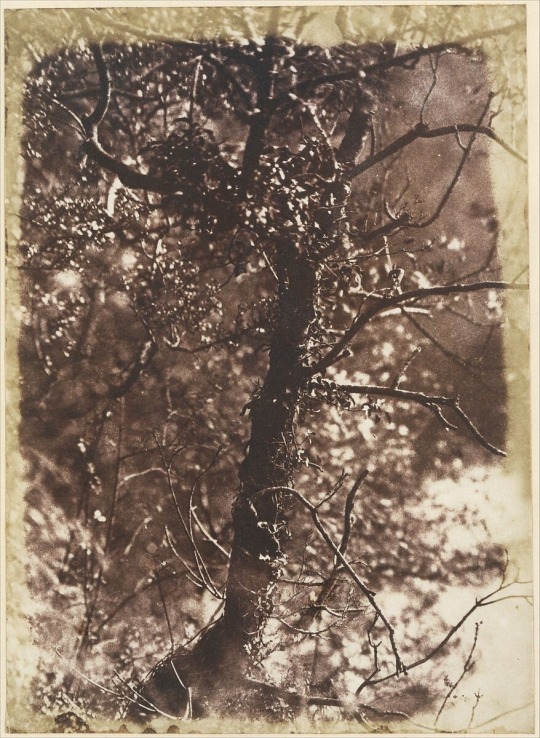
The Fairy Tree at Colinton
Photography Studio Hill and Adamson
1846
Source : metmuseum.org
99 notes
·
View notes
Photo
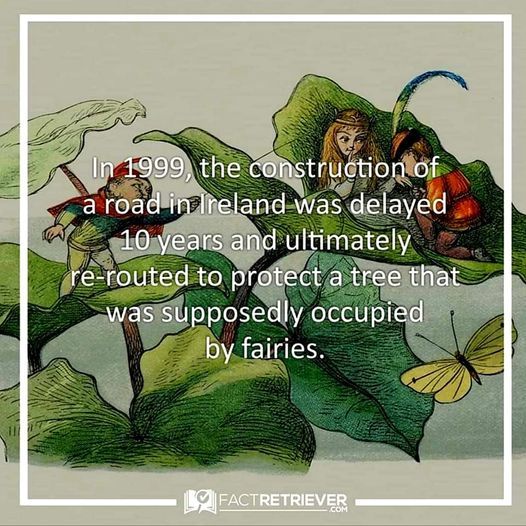
197 notes
·
View notes
Photo

06/09/2023
JUNE OF ARC continues! Mondays and Fridays all June long!
___
JOKE-OGRAPHY:
1. The "Fairies' Tree" (or "Ladies' Tree") rested outside Domrémy on the estate of some rich family, and it was near a so-called magic spring. Injured and sick people from around the village would go to the spring to be healed. The tree's existence was brought up in Joan's trial, where her accusers tried to paint her as a heathen who worshipped magic and fairies. Joan admitted to dancing with the other children near the tree, but when her Voices started, she played less and less. She says one of her godmothers, the wife of Domrémy's mayor, claimed to see a real fairy there, but Joan never had. Joan also says that she never knew if anyone who went to the magic spring for healing ever ended up getting healed.
2. "Domrémy-Fa-So-La-Ti-Do" is a play on the popular "Do-Re-Mi-Fa-So-La-Ti-Do", replacing the first three notes with the name of Joan's village.
3. Joan asks the old gossips why they won't believe her when she says her Voices are from saints. She says it's "not fair, folks." This is a play on words, because that phrase can mean two different things: first, that it's not fair (or right) that the gossips won't believe her; and second, that her Voices are not from the fair folk (another name for fairies).
#joan of arc#june of arc#st joan#st joan of arc#jeanne darc#st jeanne darc#domremy#fairy tree#fairies tree#ladies tree#heathenism#catholic#christian#joan couldnt have had fairies in her head#because she didnt believe in them#so even if they were there at the start they all wouldve died from lack of belief like tinkerbell#joan used her holiness to starve magic out of france
115 notes
·
View notes
Text
Loch Maree: Location of an Ancient God, a Dried Up Healing Well for Curing Insanity, and a Wishing Tree

Loch Maree is a fascinating place. It has two graves attributed to a King of Norway and a King of Ireland’s daughter, a plaque for the last woman(named Wynn) burnt as a witch in 1722, and an ancient god named Mourie.
The “official” story of Loch Maree say’s that it got it’s name thanks to a man called St Maol Ruanaidh, and that it was he who somehow made the sacred well flow with healing waters. However, the name of the loch is older than that, and instead is named after a god.
Sir A. Mitchell, writing in 1860, says : “The people of the place speak often of the god Mourie instead of St. Mourie.” An old man in the district told him the island’s name “was originally Eilean mo Righ (the Island of my King), or Eilean-a-Mhor-Righ (the Island of the Great King), and that this king was long ago worshipped as a god in the district.”
The Folklore Journal; Vol 4, Issue 4 by Gertrude M. Godden (1893)
Two records from 1656 (Presbyery Records) voice concern about “the abominations within the parishes of Garloch” in regards to sacrificing bulls on the 15th of August, as well as pouring milk upon hills. Despite the pressure to stop, the practice continued to the late 1700’s.

Offerings of food and milk were not the only reasons people would visit the area; travelers also came with the intent of curing “insanity” with the healing powers of the well on the island.
"The earliest allusion to the healing powers of the well is the mention of it in 1656 as the resort of the lunatic- In 1774, Thomas Pennant describes how the patient “is brought into the sacred island, is made to kneel before the altar, where his attendants leave an offering in money. He is then brought to the well, and sips some of the holy water. A second offering is made ; that done, he is thrice dipped in the lake.”
The Folklore Journal; Vol 4, Issue 4 by Gertrude M. Godden (1893)
The bringing of mentally-ill people to the island continued until the well dried up, and local lore blames that on a man who allowed his dog to drink from it. The man apparently wanted to cure his “mad dog,” —which often means the poor dog had rabies— but despite his good intentions, the act caused insult and the well ran dry.
After the well dried people continued to visit the island, but now focused their attention on the “wishing tree.” For it, people would attach offerings to the tree, which was then known for less-specific healing properties.
” It is said that if anyone removes an offering that has been attached to the tree, some misfortune, probably the taking fire of the house of the desecrator, is sure to follow. To each of the hundreds of nails, he says, ” was originally attached a piece of the clothing of some patient who had visited the spot.”
The Folklore Journal; Vol 4, Issue 4 by Gertrude M. Godden (1893)
The surface of the wishing tree was described as white and covered with coins, nails, and other metal objects. At the base of the tree was a small hole with stones and rocks, which was where the well once was.
Sadly, just like how the waters running dry was blamed on a well-meaning person, the death of the tree also came at the hands of well-meaning people. Instead of silver coins or iron nails, people moved on to something more readily available; copper coins.
This was made popular after Queen Victoria visited the island in 1877 and added her own coin, and people still add to them in every available space today(even if the wood is unrelated to the original tree).
This is something I strongly advice against doing. Copper coins can cause copper poisonings to the area, which is what killed the wishing tree. Even if there is no life left on the island, the copper can still be harmful for wildlife. This is actually a common problem for coin wishing wells with fish; where the copper poisoning gradually kills the fish.
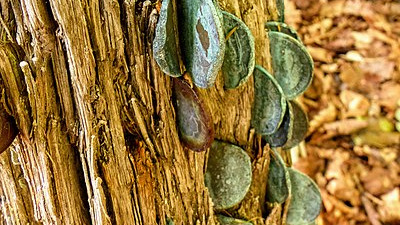
#mourie#gods#gods of scotland#PaganScotland#pagan scotland#wishing tree#wishing trees#coin tree#fairy tree#Scottish Gods#Scottish paganism#TheOldGods#WaterTypeFairies
20 notes
·
View notes
Text




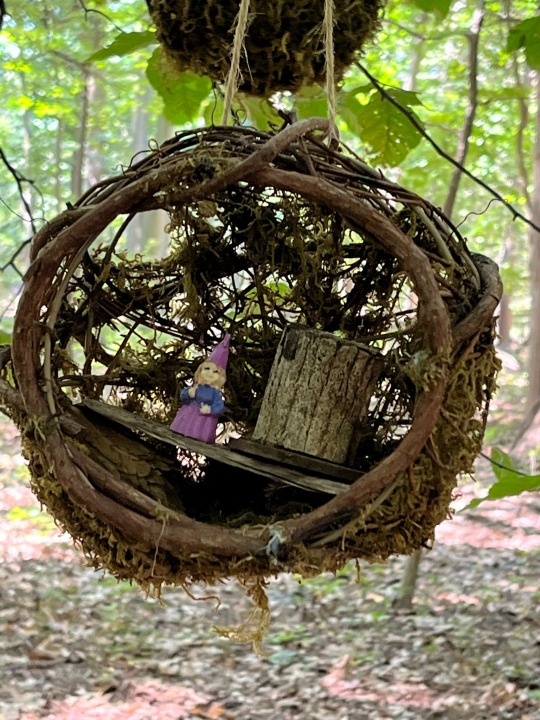


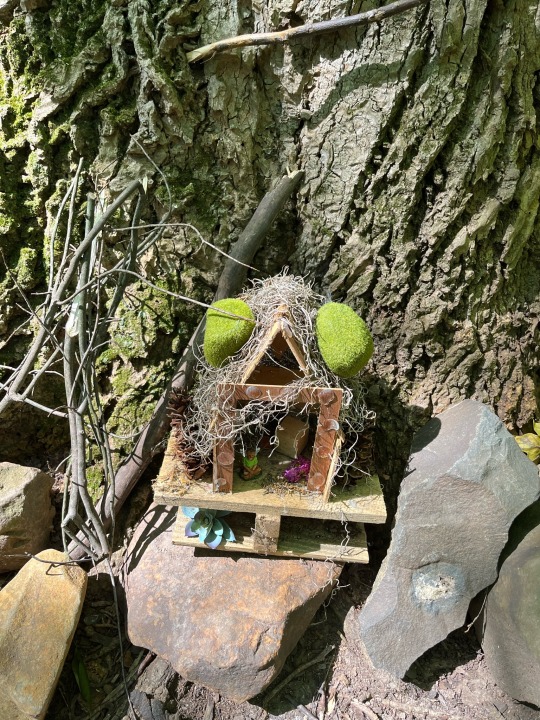

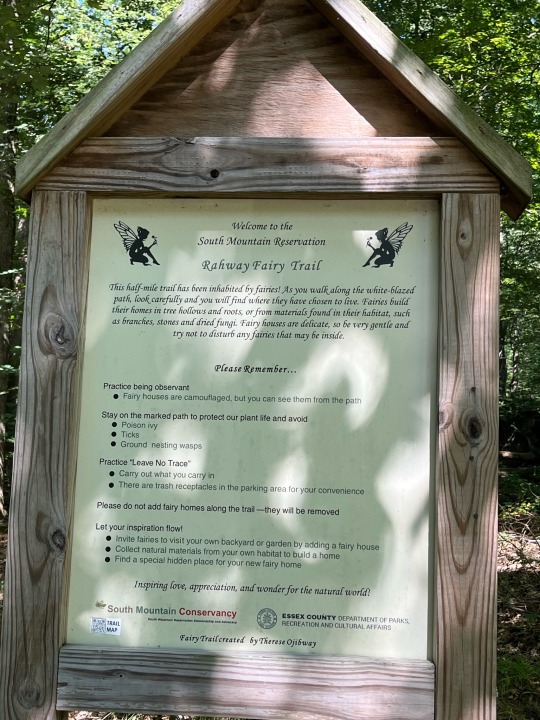
I wish I could show you *all* the Fairy Houses I saw today at the Rahway Fairy Trail at the South Mountain Reservation in Millburn, NJ. This is about 20% of them. Highly recommend you check it out. ZOOM IN. 🏡🧚🏻♀️🧚🏼🐲🦄🧌✨☀️🌙🌟💫⭐️
PART OF ANCIENT LENNI LENAPE NATIVE LANDS.
#fairy aesthetic#fairycore#fairy cottage#fairy tree#fairy trail#fairy house#fairy art#fairy forest#you’re gonna want to zoom in#fairy magic#fairy dust#fairy glitter#lenni lenape lands#native peoples lands
6 notes
·
View notes
Photo

if I was born as a blackthorn tree
I'd wanna be felled by you, held by you
fuel the pyre of your enemies
nfwmb - hozier
#drawtober 2020#drawtober 2020 day 2#digital art#nfwmb#hozier#fairy tree#horror#horror art#blackthorn tree#lyric inspo#song art#digital painting#drawtober
11 notes
·
View notes
Text

3 notes
·
View notes
Photo
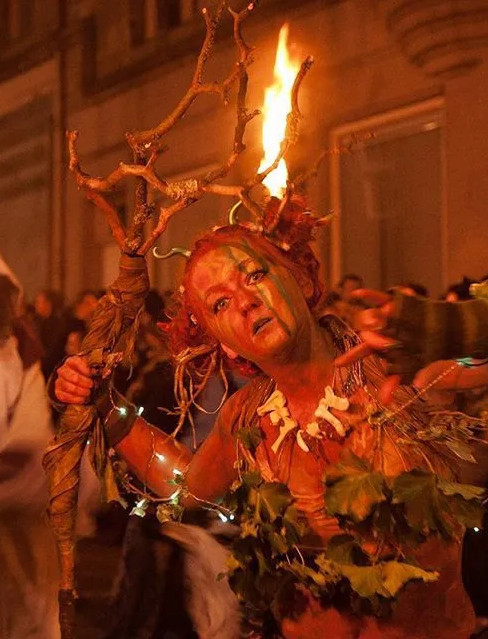
[Photo above: Samhain, courtesy of Beltane Fire Society]
Legends and myths about trees
Legendary tree deities (22)
Hyldemoer – 'the Elder Mother’, the guardian of the elder trees
“If you stand beneath an elder tree on midsummer eve you will see the King of the faeries and his entourage but be careful that you do not get swept away to faerieland.
The tree and the wood is greatly prized by the fae folk, so it must not be used to make mundane household objects, especially not a cradle or the baby will be pinched black and blue.
Do burn the wood or bring it into the house as this is very unlucky and will bring the devil in.
The Elder Mother guards the tree and although she is usually kind she can become dangerous, if her trees are harmed so you must always ask permission before cutting an elder tree.
To cut elder wood you must say, three times, ‘Elder Mother, please give me some wood, and I’ll give you some of mine when I grow into a tree (Ourd gal, give me some of thy wood, an oi will give some of moine, when oi grows inter a tree)’.”
Faeries and Folklore from the British Isles
The Elder Mother is thought to be the guardian of the elder trees, and it was said, until recent times in various parts of England and Scandinavia that to take wood from the elder tree one would have to ask the Elder Mother first, or else ill luck would befall the woodsman. The spirit is said to haunt or torment people who build from elder wood unless they ask permission first.
In Denmark, the Hyldemoer (“Elder-mother”) or Hyldequinde (“Elder-woman”) is a spirit like a wood-nymph or dryad that lives in the elder tree.
Other similar and related beliefs have been handed down in various cultures.
In Denmark, an elder twig put in the mouth was traditionally thought to drive out evil spirits and thus could cure toothache. Also in Denmark, on Midsummer's Eve, if you were to stand under an elder, you could see the Elf-king and his host. A similar tradition existed in Scotland where it was said to happen on All Hallows or Samhain.
In England, it was thought that the elder tree could never be hit by lightning and that carrying the twigs of an elder could protect their bearer from rheumatism. Farmers used to protect their animals from evil by placing a cross made from elder on their cow-sheds and barns.
In some Slavic countries, such as Russia, it is thought that the tree had the power to ward off evil. In Sicily, it was claimed to have the power to ward off snakes, and so on.
Every summer, our neighbourhood had an elder hedge with divine, full blossoms, but it was completely cut down to develop a residential site. These days, they spray the stumps with powerful chemicals to prevent regrowth.
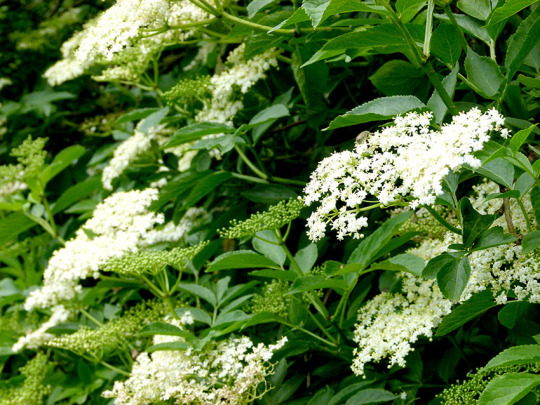
木にまつわる伝説・神話
伝説の樹木の神々 (22)
ヒルデモア-「エルダー・マザー」、ニワトコ (エルダー) の木の守り神
“真夏の夜、ニワトコの木の下に立つと、妖精の王とその一行を見ることができる。でも、妖精の国に流されないように気をつけて。
この木と木材は、妖精たちにとても珍重されている。だから、ありふれた家庭用品を作るのに使ってはいけない、特にゆりかごは厳禁だ。さもないと、赤ん坊は青黒く痣が付くまでつまんで痛めつけられる。薪を燃やしたり、家の中に持ち込んだりしてはいけない。これは非常に不吉で、悪魔がやってくるからだ。
エルダー・マザーは木を守っている。彼女は普段は優しいが、ニワトコの木に危害を加えると危険な存在になる。だから、ニワトコの木を切る前には、必ず許可を得ること。
『ニワトコのお母さま、私にあなたの薪をちょうだい。私が木に成長したら、私の薪も差し上げます』と、3回唱えなければならない。”
ブリテン諸島の妖精と民間伝承より
エルダー・マザーはニワトコ(エルダー)の木の守り神であると考えられており、イギリスやスカンジナビアの各地では最近まで、ニワトコの木から木材を取るにはまずエルダー・マザーに許可を得なければならず、さもなければ木こりに不運が降りかかると言われていた。その精霊は、まず許可を得なければ、ニワトコの木で建物を建てた人に取り憑いたり、苦しめたりすると言われている。
デンマークでは、ヒルデモア(「ニワトコの母」)またはヒルデキンデ(「ニワトコの女」)は、ニワトコ(エルダー)の木に住む木の妖精やドライアドのような精霊である。
このほかにも、さまざまな文化圏で似たような信仰が受け継がれている:
デンマークでは伝統的に、ニワトコの小枝を口に入れると悪霊が追い出され、歯痛が治ると考えられてきた。またデンマークでは、夏至祭の夜にニワトコの下に立つと、エルフの王とその群れが見えるとされていた。スコットランドにも同様の伝統があり、万聖節(All Hallows)またはサウィン祭(Samhain)に起こると言われていた。
英国では、ニワトコの木は雷に打たれることがなく、ニワトコの小枝を持っているとリューマチから身を守れると考えられていた。農家では、ニワトコで作った十字架を牛小屋や納屋に置くことで、家畜を悪魔から守っていた。
ロシアなどのスラブ諸国では、この木には魔除けの力があると考えられていた。シチリアでは、蛇を追い払う力があるとされていたなどなど…。
毎年夏になると、近所にニワトコの生け垣があり、神々しいほどの満開の花を咲かせていたが、宅地開発のために完全に切り倒されてしまった。最近では、再生を防止するため、切り株に強力な化学薬品を撒くらしい。
#trees#tree legend#tree myth#elder mother#hyldemoer#elder wood#elder trees#legend#folklore#mythology#all hallows#samhain#fairy#fairy tree#nature#art
99 notes
·
View notes
Text

by psychgloss
12 notes
·
View notes
Text
Espino Albar 🌼
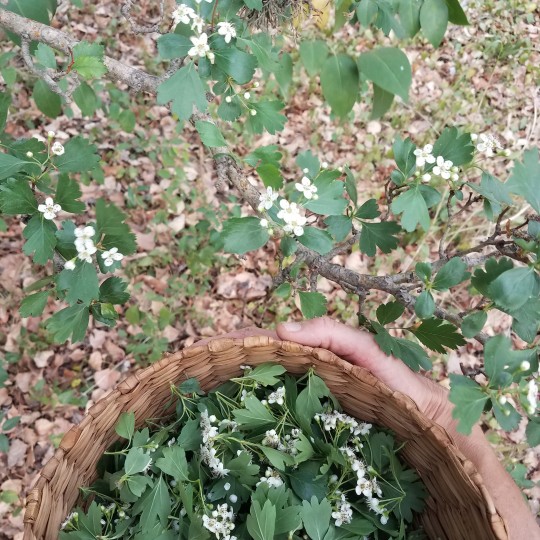
El árbol asociada con hadas y brujas. La flor y el fruto tiene propiedades para sanar el corazón y apoyarnos durante el proceso de duelo. Su recolección marca el comienzo de primavera y las actividades de herbalista ... feliz comienzo de primavera! 🧚🏽♀️
🧝🏼♀️
🌼
2 notes
·
View notes
Text
St. Patrick, faith and fairies, Ireland Tradition!
St. Patrick, faith and fairies, Ireland Tradition!
Under every rock and tree is a story, and a church on every corner. June 5-15th, I traveled with my husband Keith, his brother Craig and wife Debbie to the southern half of Ireland. We learned religion played a part in almost every aspect of Ireland’s history.
Jody Halstead of Ireland Family Vacations helped us plan this magical trip. Hooking us up with Irish Chauffer’s, we had a guide, John…

View On WordPress
#beehive huts#Bronze Age#chapel at Kylemore Abbey#Connemara Ireland#Connemara marble#Druid priests#Dubllin#fairies#Fairy Tree#faith#Gallarus oratory#Glendalough&039;s Monastic City#Hawthorn Trees#healing waters#Heavenly vestments#Ireland#Ireland Family Vacations#Irish Chauffers#Kenmare Stone Circle#Kylemore Abbey#Medieel History Museum#Mitchell and Margaret Hene=ry#Rock of Cashel#St. Bridget&039;s Well#St. Kevin#St. Patrick#St. Patrick&039;s Cathedral#Waterford Ireland
3 notes
·
View notes
Text




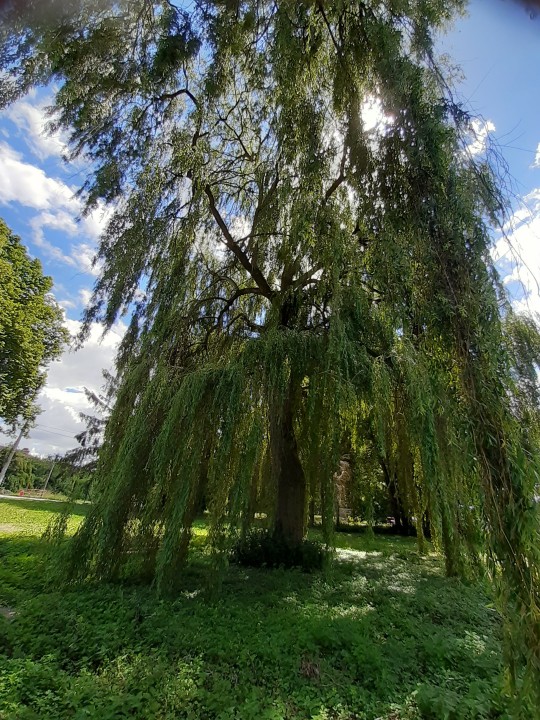

3 notes
·
View notes
Text

Another poem by Mary Oliver to accompany this new painting because I'm currently reading one of her books and she has words for all my feelings:
How I Go To The Woods
Ordinarily I go to the woods alone,
with not a single friend,
for they are all smilers and talkers
and therefore unsuitable.
I don’t really want to be witnessed talking to the catbirds
or hugging the old black oak tree.
I have my ways of praying,
as you no doubt have yours.
Besides, when I am alone
I can become invisible.
I can sit on the top of a dune
as motionless as an uprise of weeds,
until the foxes run by unconcerned.
I can hear the almost unhearable sound of the roses singing.
If you have ever gone to the woods with me,
I must love you very much.
#fairytale#fairy tree#fairy home#tree painting#fantasy painting#fantasy art#art magic#art witch#fairycore#magical night#magic tree#witchy art
1 note
·
View note
